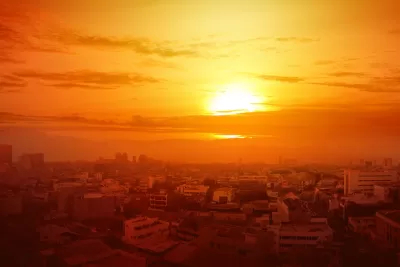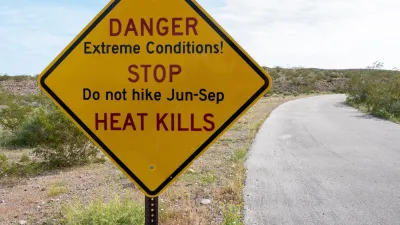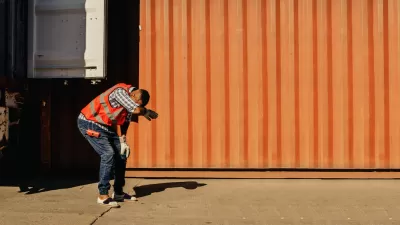With this year bringing on more record heat waves, governments at the local and federal levels are elevating extreme heat management as an urgent priority.

The trend of hotter summer is not abating as temperatures continue to break records, writes Carl Smith in Governing, putting residents of fast-growing cities like Phoenix at risk for heat-related illnesses and death.
“According to the 2022 Heat Deaths Report from the Maricopa County Department of Public Health, the county had 425 “heat-associated” deaths in 2022, a combination of fatalities caused directly by heat and those in which heat was a contributing factor.” That number was 25 percent higher than in 2021, and over twice as high as the average between 2016 and 2019.
Ariella Dale, a health scientist for the Maricopa County Department of Public Health, says it is crucial for cities to drill down into the details of heat-related deaths and understand who dies and why. “If a community does not already have experience dealing with heat, Dale says, a first step is evaluating gaps in communication and services for communities at highest risk. These tend to be the same groups — the old, the unhoused, the poor — that are most vulnerable to infectious disease outbreaks and other preventable health problems.”
As part of its response, Maricopa County has created an interactive “heat relief” map to help residents locate cooling centers, hydration stations, and locations to collect bottled water donations.
In addition to short-term heat management strategies, “The long-term objective is heat mitigation — adapting, rethinking and redesigning urban spaces so that they do not intensify atmospheric heat.” Strategies include green infrastructure, cool pavement and roof materials, and solar panel installations that provide both shade and renewable energy.
FULL STORY: Still Too Damn Hot — 2024 is Another One for the Record Books

Alabama: Trump Terminates Settlements for Black Communities Harmed By Raw Sewage
Trump deemed the landmark civil rights agreement “illegal DEI and environmental justice policy.”

Planetizen Federal Action Tracker
A weekly monitor of how Trump’s orders and actions are impacting planners and planning in America.

The 120 Year Old Tiny Home Villages That Sheltered San Francisco’s Earthquake Refugees
More than a century ago, San Francisco mobilized to house thousands of residents displaced by the 1906 earthquake. Could their strategy offer a model for the present?

LA’s Tree Emergency Goes Beyond Vandalism
After a vandal destroyed dozens of downtown LA trees, Mayor Karen Bass vowed to replace them. Days later, she slashed the city’s tree budget.

Sacramento Leads Nation With Bus-Mounted Bike Lane Enforcement Cameras
The city is the first to use its bus-mounted traffic enforcement system to cite drivers who park or drive in bike lanes.

Seattle Voters Approve Social Housing Referendum
Voters approved a corporate tax to fund the city’s housing authority despite an opposition campaign funded by Amazon and Microsoft.
Urban Design for Planners 1: Software Tools
This six-course series explores essential urban design concepts using open source software and equips planners with the tools they need to participate fully in the urban design process.
Planning for Universal Design
Learn the tools for implementing Universal Design in planning regulations.
Ada County Highway District
Clanton & Associates, Inc.
Jessamine County Fiscal Court
Institute for Housing and Urban Development Studies (IHS)
City of Grandview
Harvard GSD Executive Education
Toledo-Lucas County Plan Commissions
Salt Lake City
NYU Wagner Graduate School of Public Service





























